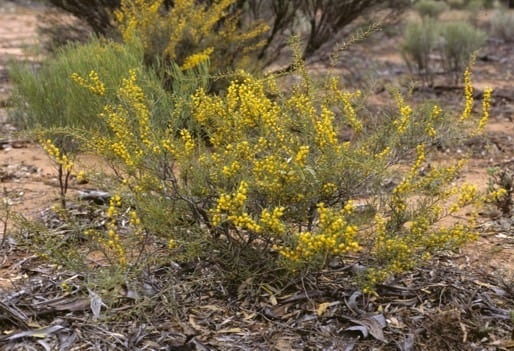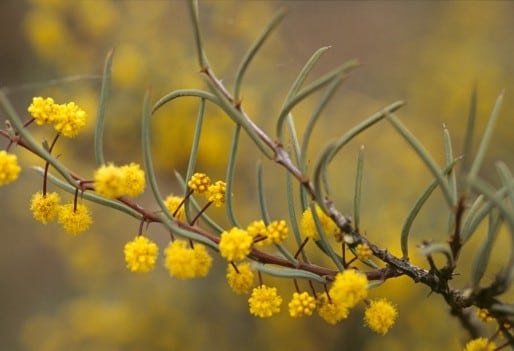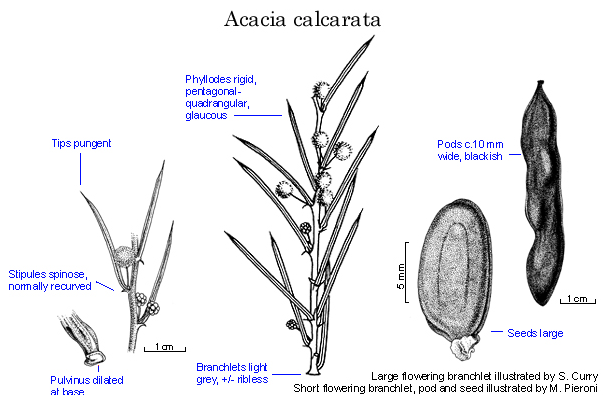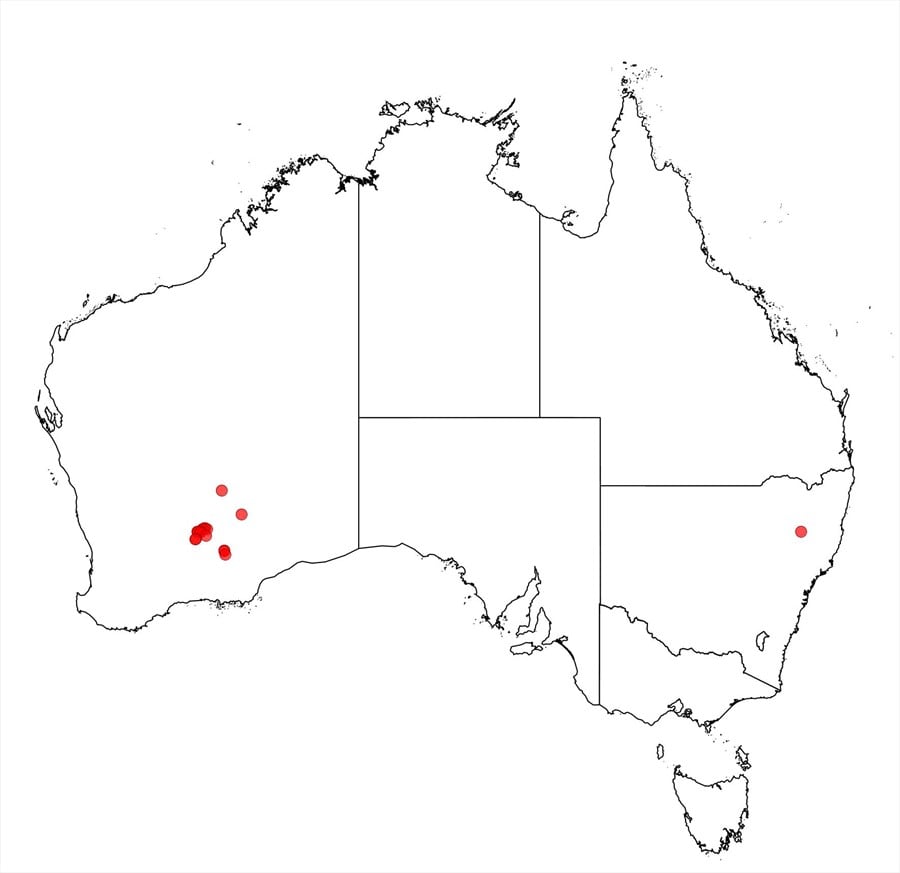Acacia calcarata Maiden & Blakely
WATTLE
Acacias of Australia
Family
Fabaceae
Distribution
Occurs from near Bullabulling and Kalgoorlie SE to Woodline, W.A.
Description
Spreading rigid shrub 0.5–1.5 m high. Branchlets ±ribless, reddish at extremities, ageing light grey, glabrous. Stipules persistent, spinose, 1.5–3 mm long, normally shallowly recurved. Phyllodes ascending to erect, commonly shallowly curved, frequently slightly kinked at the gland, pentagonal-quadrangular in section when dry, 20–40 mm long, c. 1.5 mm wide, pungent, rigid, glaucous, glabrous, 5-nerved but the adaxial 2 frequently coalescing on lower 1/3 of phyllode; gland c. 1 mm above base, 1–1.5 mm long; pulvinus much-reduced, basally dilated. Inflorescences rudimentary normally 2-headed racemes with axes > 0.5 mm long; peduncles 3.5–7 mm long, crimson, glabrous; heads globular, 16–22-flowered, golden. Flowers 5-merous; sepals c. 1/2-united. Pods narrowly oblong, flat, to 7 cm long, c. 1 cm wide, thinly crustaceous, blackish, glabrous. Seeds longitudinal, elliptic, c. 12 mm long, compressed; aril small, pileiform.
Habitat
Grows in sometimes rocky sandy loam, in open mallee scrub or tall shrubland.
Specimens
W.A.: Woodline, c. 110 km ENE of Norseman, G.J.Keighery 3043 (PERTH); 12 km E of Coolgardie, B.R.Maslin 1884 (AD, DNA, K, NSW, PERTH); 42 km N of Widgiemooltha, R.A.Saffrey 884 (PERTH).
Notes
Formerly confused with A. inamabilis which has green, finely ribbed, lenticellate branchlets, green phyllodes, a pulvinus which is not flared basally, yellow to light brown peduncles and much narrower pods. Phyllodes and branchlets resemble those of A. asepala.
FOA Reference
Data derived from Flora of Australia Volumes 11A (2001), 11B (2001) and 12 (1998), products of ABRS, ©Commonwealth of Australia
Author
B.R.Maslin
This identification key and fact sheets are available as a mobile application:
URL: https://apps.lucidcentral.org/wattle/
© Copyright 2018. All rights reserved.









